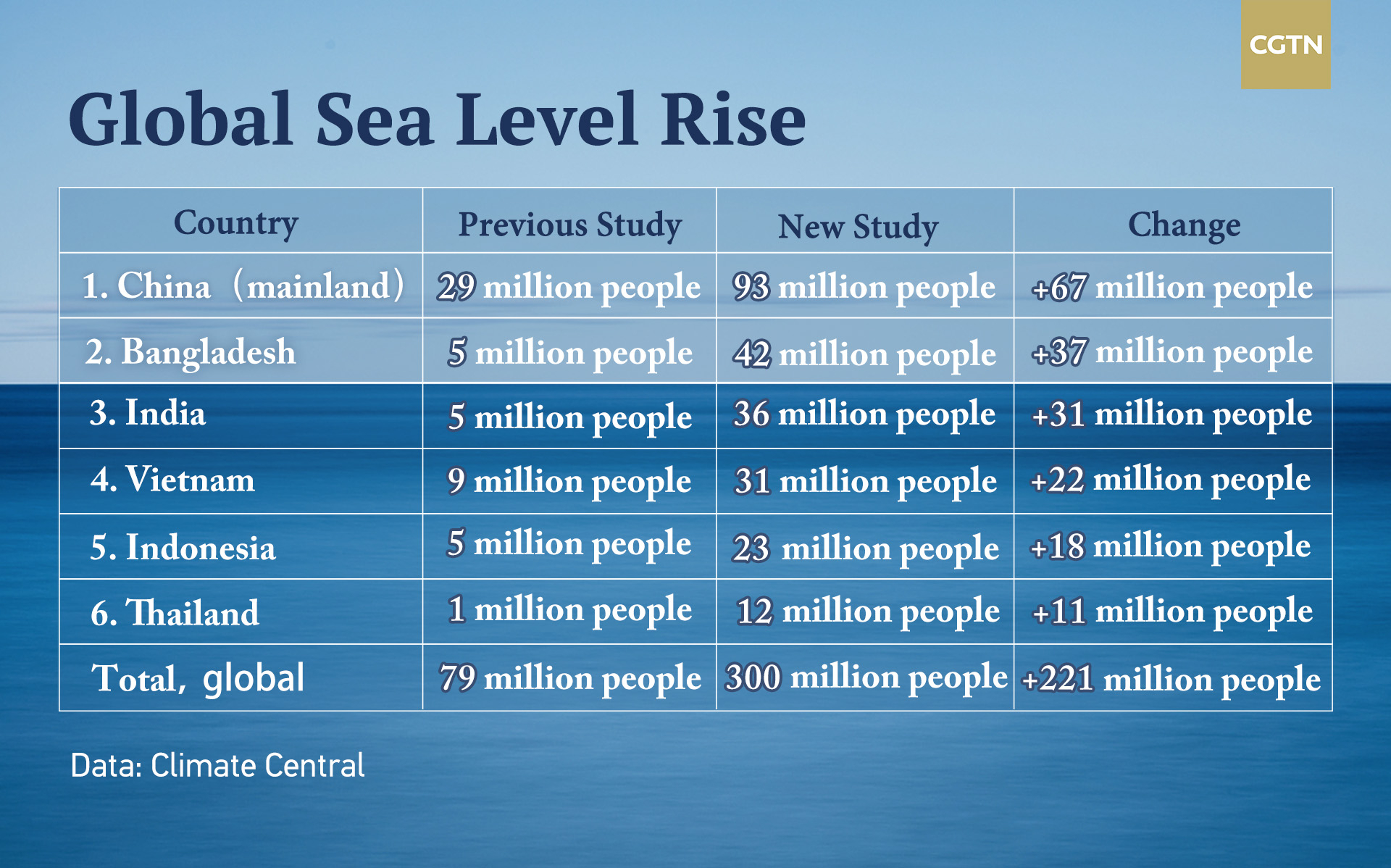
Sea level rise could affect three times more people by 2050 than previously estimated. More than 300 million people, 75 percent of them residing in the coastal areas of China, Bangladesh, India, Vietnam, Indonesia, and Thailand would face frequent flooding, warned a new study.
The risk of flooding in the next century would increase at least three times in China and neighboring India the threat would be around 12 times higher, a peer-reviewed study published in Nature Communications on Tuesday said.
Researchers used a more accurate model to compare land elevation and sea-level rise to predict the threat. According to the new estimates, around 110 million people are living on land below the current high tide line and 250 million on land below the current annual flood levels.
A previous study based on a lesser accurate system had predicted that sea-level rise would threaten 80 million people. "These assessments show the potential of climate change to reshape cities, economies, coastlines, and entire global regions within our lifetimes," said Dr. Scott Kulp, lead author of the study in a statement.
Globally, sea level is rising due to the massive emission of heat-trapping greenhouse gases that are warming the planet. The rising temperature is melting glaciers and ice sheets and adding more water into the oceans. The excess water is crawling into low lying coastal areas.
"The greatest effects will be felt in Asia, thanks to the number of people living in the continent's low-lying coastal areas," the study said.
Altogether 151 million people are at risk of inundations in China, Bangladesh, India, Vietnam, Indonesia, and Thailand. Nearly a quarter or 43 million of those people could be residing in China.

A new study has nearly tripled the estimate of the number of people likely to face the impact of rising sea-level. /Graphics by CGTN's Du Chenxin
A new study has nearly tripled the estimate of the number of people likely to face the impact of rising sea-level. /Graphics by CGTN's Du Chenxin
With the sea-level rise, the number of people living at lowland would swell to 93 million in China, exposing them to frequent annual coastal flooding by 2050. As a result, major cities like Shanghai, a crucial economic hub and most populous city of the country could face frequent flooding.
The neighboring low-lying Jiangsu Province would also face similar consequences. Equally vulnerable are Tianjin, the main port for the capital city of Beijing, and the Pearl River Delta region, an urban agglomeration comprising several major mainland cities and the special administrative regions of Hong Kong and Macao.
"Economic losses in China would matter for the rest of the world: the country is responsible for more than a quarter of the growth in today's global economy and is projected to remain the world's biggest economy, in purchasing power parity terms, in 2050," said the researchers.
Bangladesh and Vietnam, where 42 million and 31 million people respectively reside in coastal areas, could face saltwater flooding at least once per year at mid-century. Capital cities of both countries, Dhaka and Hanoi, would also face frequent flooding.
In India, floods would impact 36 million people. The worst affected would be two coastal states of West Bengal and Odisha, where a large number of families would lose livelihood and their homes.
Researchers also predict a rise of coastal conflict as retreating coasts stocking international disputes over fisheries and other ocean resources. With sea reclaiming the land, there would be a surge in mass migration leading to political unrest.
Deep, immediate cuts to global emissions would modestly reduce the danger posed by rising seas this century. If governments seek to limit future impacts from ocean flooding, they could also avoid new construction in areas at high risk of inundation, while protecting, relocating, or abandoning existing infrastructure and settlements, researchers suggested.